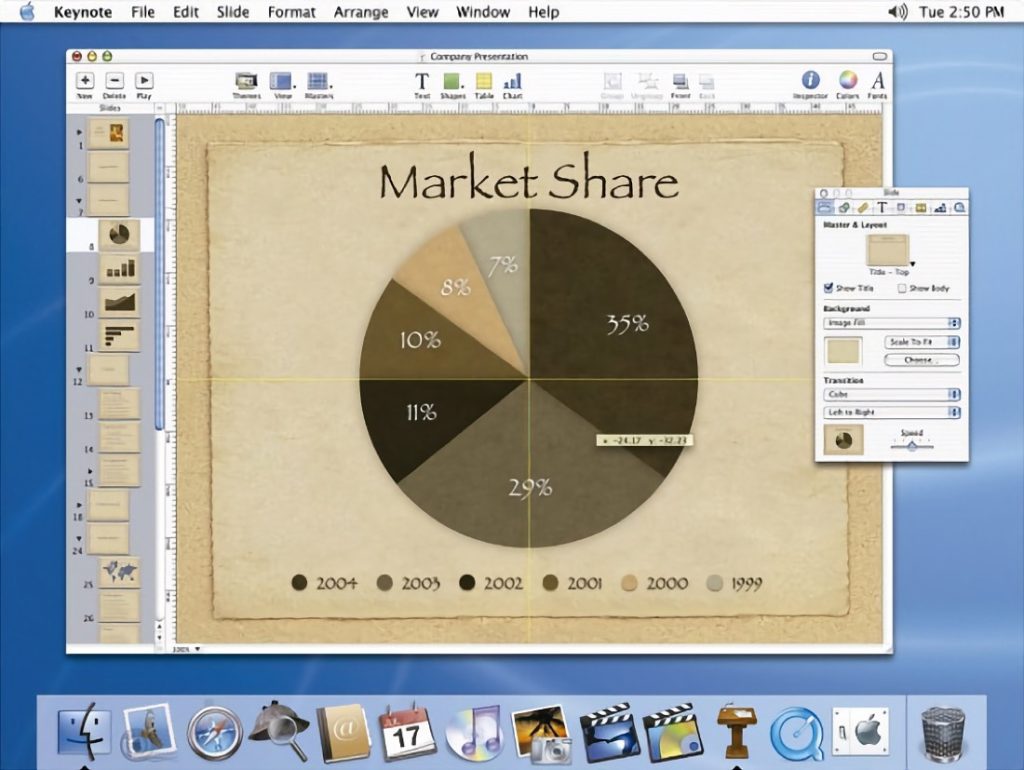Celebrating 20 Years of Apple's Safari and Keynote

On January 7, 2003 Apple introduced two new apps, both of which proved to be significant steps for the still young Mac OS X platform. The apps were a surprise to the public and press and were important steps in a much larger process of Apple building it's own ecosystem of applications which it continues today.
Of the two, Safari was likely the most significant. Apple's press release:
MACWORLD EXPO, SAN FRANCISCO—January 7, 2003—Apple® today unveiled Safari™, the fastest and easiest to use web browser ever created for the Mac®. Safari’s highly-tuned rendering engine loads pages over three times faster than Microsoft’s Internet Explorer for the Mac and runs Javascript over twice as fast. Safari’s innovative features include Google search capabilities integrated directly into the toolbar; SnapBack, a new way to instantly snap back up to search results or the top level of any website after browsing down one or more levels; a completely new way to name, organize and present bookmarks; and automatic “pop-up” ad blocking.
Safari began it's life at Apple with the WebKit project which was a fork of the open source KHTML layout engine. Don Melton started the WebKit project at Apple on June 25, 2001. He's got a great post about Safari on his blog, published 2013.
Apple's Safari Page on Web Archive
I remember being very excited as I'm sure many were. The significance of Apple releasing its own web browser was pretty clear to Apple users. My take-away at the time was that Apple didn't want to depend on Microsoft for what was becoming one of the most important apps on a computer. 20 years later and Safari continues and is now the second most used browser largely due to the introduction of the iPhone and iPad. While I tried various browsers over the years Safari remained my primary browser and today is the only one I use for day-to-day browsing.
But their big app announcements for that day were not finished.

The other significant surprise of the day was the release a new presentation application: Keynote. This release seemed to further underscore Apple's intention to become more self-reliant in it's app offerings. As a user of the Appleworks suite of applications I was very excited at the new release as it filled a gap. Though we were unaware at the time it would prove to be the first of a new suite of applications that Apple would release over the next few years called iWork.
The app was originally designed as presentation software for Steve Jobs, Keynote originally retailed as a stand alone application for $99. Pages was added in 2005 and Numbers in 2007. While Microsoft continued to provide its Office apps, Keynote quickly became a favorite of Mac users due to the ease of use and quality of the presentation. I've used Keynote many times over the years and it's been a pleasure to create presentations with it.
“Using Keynote is like having a professional graphics department to create your slides,” said Steve Jobs, Apple’s CEO. “This is the application to use when your presentation really counts.”
Keynote includes 12 Apple-designed themes featuring coordinated backgrounds, fonts, colors, bullets, tables and charts. Users can change the theme of their presentation any number of times, modify an existing theme to their liking, or create custom themes to give their presentations a totally unique look.